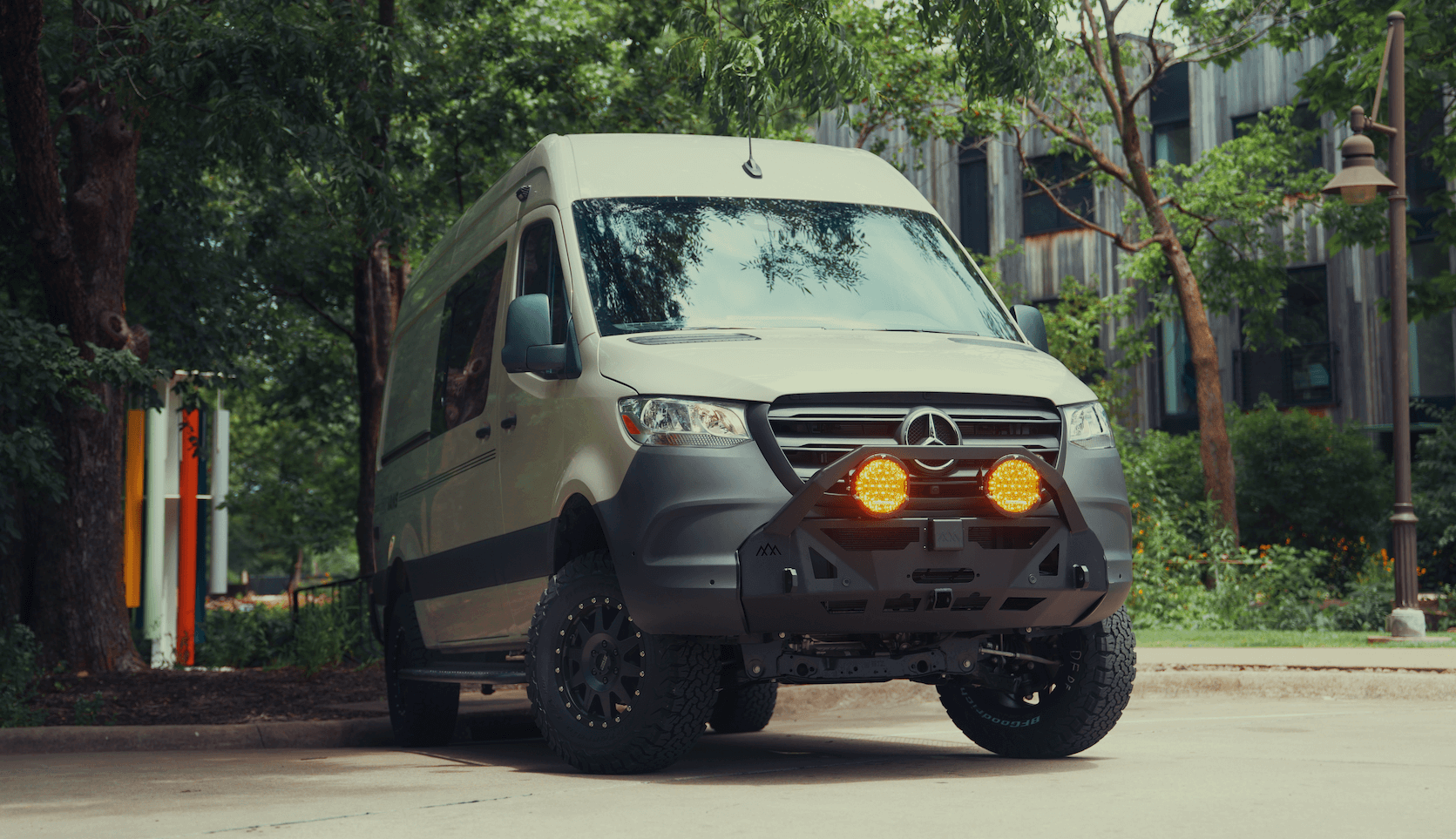Recreational Vans

Forest service roads range from well graded gravel to narrow, rutted two track with embedded rock, washboards, and surprise water bars. The right setup depends on typical obstacles, weather, and your vehicle geometry. Three measurements matter most for avoiding scrapes and hang ups. Ground clearance keeps the belly off rocks and crowned centers. Approach and departure angles keep bumpers off ledges and berms. Breakover angle reduces high centering on crests. Stock SUVs, crossovers, and light trucks often handle maintained forest roads with care, especially when fitted with all terrain tires. These roads usually reward slow speeds, smooth throttle, and careful tire placement more than raw lift height. The biggest early upgrades are traction and protection, not dramatic ride height changes.
A mild lift typically in the one to two inch range can add practical clearance, fit a slightly larger tire, and improve approach or departure angles. That extra inch under the rear differential reduces diff strikes in ruts. Taller sidewalls allow lower pressures for comfort and grip on washboard. With independent front suspension, a small lift combined with matched shocks can also improve suspension travel control. There are tradeoffs. Raising the vehicle increases center of gravity which impacts stability in emergency maneuvers and on off camber grades. Alignment angles change and may accelerate tire wear if not set correctly. Steering geometry can feel different on pavement. Fuel economy may dip due to added frontal area and tire mass. On some platforms, excessive lift can stress CV joints and require correction parts that add cost. Ask two questions before lifting. Do you frequently hit the underside, or are you simply looking for a tougher stance If you can route your line to avoid hits and your current tires maintain traction, a lift may be optional. If you routinely touch down on ruts or crest on breakovers even with careful driving, a small, well tuned lift can be worthwhile.
On forest service roads, quality all terrain tires often transform capability more than height. A tire with a strong carcass, mild to moderate tread, and a slightly taller sidewall smooths chatter, resists punctures, and maintains grip on loose gravel. Even moving one size up can help clearance under the axle and improve ride when aired down to appropriate pressures for speed and load.
Good shocks control washboard and repeated hits so the tires keep contact with the ground. On rough gravel, fade resistant damping reduces hopping and braking distances. Many stock suspensions benefit from upgraded shocks while retaining stock height. This preserves geometry and ride quality on pavement while improving control off pavement.
Skid plates for the engine, transmission, and transfer case protect the vital parts you cannot afford to damage in remote areas. Rock rails guard door sills against hidden stumps at pull outs. These parts often prevent trip ending issues more effectively than another inch of lift.
Focus on a priorities list. First, select the right tire for your load and terrain, then set pressures with a quality gauge. Second, add targeted skid plates and recovery points. Third, maintain visibility and clearance by trimming plastic as needed for slightly larger tires rather than chasing a tall lift. Fourth, carry basic recovery gear like a shovel, traction boards, a soft shackle, and a kinetic rope sized for your vehicle weight. Driving technique is a force multiplier. Slow down for sightlines. Cross ruts diagonally to reduce belly contact. Approach water bars at an angle. Use a spotter when cresting blind humps. In wet seasons, forest roads can develop mud holes that look shallow but conceal deep ruts. Probe with a stick or walk the line first when conditions are uncertain. Season and weather shift the calculus. Summer washboards reward damping and tire pressure adjustments. Spring thaws and recent rains argue for tires with better self cleaning tread and patient throttle. Winter ice or packed snow may make a lighter, stock height vehicle with proper tires more predictable than a tall rig. If you still want more clearance, favor a conservative lift paired with shocks matched to vehicle weight. Keep total tire diameter changes modest to protect gearing and braking. After installation, get a professional alignment, retorque hardware after the first few drives, and reassess cargo weight distribution to preserve balance.
If your typical routes involve frequent rocks that contact the differential housing, deep cross ruts that high center your frame, or snowpack where belly drag is constant, that extra inch or two is not just cosmetic. In those cases, a mild lift with slightly taller tires can reduce strikes, protect components, and reduce driver fatigue by expanding your usable lines. The key is pairing height with control, protection, and a realistic understanding of your trails.
When you are ready to translate this plan into a build, we can help you match suspension, tires, and protection to your roads instead of guessing. Explore our recreational vans to see how we tailor comfort and capability for gravel travel. If you want a clean slate designed around your routes, our custom build van path creates a purpose built platform. Prefer a finance friendly starting point Review our mainstream vans to get rolling faster.
Tell us about your roads and your cargo, and we will recommend the right mix of suspension tuning, tires, and armor. We build in Fayetteville and deliver rigs that glide over washboard and handle daily driving with ease. Share your goals and we will spec a solution that works on forest service roads without unnecessary compromises.
Ready to build a rig that matches your trails Fill out the form and our team will spec suspension, tires, and protection for your terrain, then craft a dialed van or truck that rides smooth on forest service roads and beyond. Book your consult today.
ADDRESS:
6159 E Huntsville Rd, Fayetteville, AR 72701
PHONE:
(479) 326-9200
EMAIL:
info@ozkvans.com